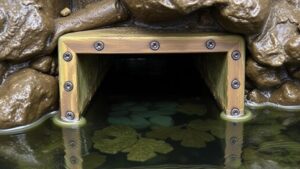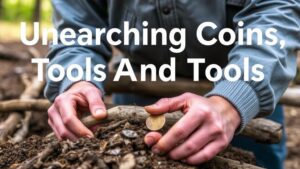How to Maximize Treasure Recovery in Seasonal River Crossings
How to Maximize Treasure Recovery in Seasonal River Crossings
Seasonal river crossings, often marked by increased water flow and varying terrain, present both challenges and opportunities for treasure recovery enthusiasts. With proper strategies and techniques, individuals can significantly enhance their recovery rates in these dynamic environments. This article delves into effective methods, technologies, and considerations for maximizing treasure recovery in seasonal river crossings.
Understanding Seasonal River Dynamics
Seasonal rivers are characterized by fluctuating water levels, often influenced by rainfall, snowmelt, and other climatic conditions. Understanding these dynamics is crucial for treasure recovery. The changes in water flow can uncover artifacts, coins, and other historical treasures that are normally buried beneath sediment.
The process of erosion and sediment deposition plays a significant role in how and where treasures can be found. During flooding events, for example, heavy currents can dislodge items from their resting places, redepositing them downstream or in accessible locations. On the other hand, in low water periods, areas that were previously submerged may reveal hidden treasures.
Strategic Planning and Timing
Timing your expeditions is of utmost importance. The best times for treasure recovery in seasonal rivers are often just after heavy rainfalls when water levels are high yet receding, exposing new treasures deposited during the flow. Planning expeditions for early spring or after significant storms can yield higher recovery rates.
- Observation of Local Weather Patterns: Closely monitor meteorological forecasts to identify periods of significant rainfall or snowmelt.
- Historical Data: Research past flooding patterns and treasure finds to determine the most productive areas.
Essential Equipment for Recovery
Having the right equipment can greatly enhance the efficiency of treasure recovery efforts. Depending on the specific conditions of the river and the anticipated treasures, different tools may be necessary.
- Metal Detectors: These devices can save time by identifying metal objects beneath the surface quickly. For river crossings, consider waterproof detectors that can be submerged.
- Dredging Equipment: Dredges can help extract materials from deeper sections of the riverbed. Ensure compliance with local regulations regarding dredging activities.
- Shovels and Sieves: Hand tools can be invaluable for manual digging, especially in shallower waters where precision is required.
Safety Considerations
Prioritizing safety is essential when engaging in treasure recovery in seasonal rivers. Rapidly changing conditions can pose significant risks, including swift currents and submerged hazards. Key safety measures include:
- Wearing Personal Flotation Devices (PFDs): Always wear a life jacket when working near water.
- Establishing a Buddy System: Work in groups to ensure safety in case of emergencies.
Also, be aware of your surroundings and avoid treacherous areas that could pose danger. Risk assessments should be conducted and it is wise to have an emergency plan in place before embarking on recovery missions.
Preserving and Documenting Finds
Once treasures are recovered, the next step is proper preservation and documentation. Many historical finds require specific methods of cleaning and storage to avoid damage. Key practices include:
- Record Keeping: Document the location and context of each find, as this information can be crucial for historical research.
- Proper Cleaning Techniques: Use non-abrasive solutions for cleaning metals, ceramics, and organic materials to preserve their integrity.
Case Studies of Successful Recoveries
Numerous successful treasure recovery operations have taken place in seasonal river settings, demonstrating the effectiveness of the strategies discussed. For example, the recovery of colonial coins in the Susquehanna River showcases how high water events can uncover buried historical artifacts.
Plus, treasure hunters in the Mississippi River Delta have reported significant finds following seasonal flooding, with thousands of coins recovered from riverbanks after the water receded. e instances highlight the potential bounty waiting to be discovered, pending proper research and planning.
Conclusion
Maximizing treasure recovery in seasonal river crossings requires a blend of knowledge, preparedness, and the right tools. By understanding river dynamics, strategically planning timing, employing essential equipment, prioritizing safety, and ensuring the proper preservation of finds, treasure hunters can substantially increase their recovery rates. As with any treasure hunting endeavor, success is often a combination of diligence, analysis, and a bit of luck.
Ultimately, those who engage in this form of treasure recovery not only stand to gain material rewards but also contribute to the appreciation and understanding of our shared history.


